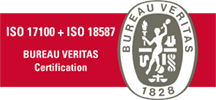Translation is an essential part of business
You need to market your business to make your products available to potential customers. Marketing helps businesses grow by increasing a brand’s visibility and establishing a recognisable presence in consumers’ minds. There are several ways for marketing to impact your target audience and to raise their awareness regarding the benefits your company has to offer. […]

